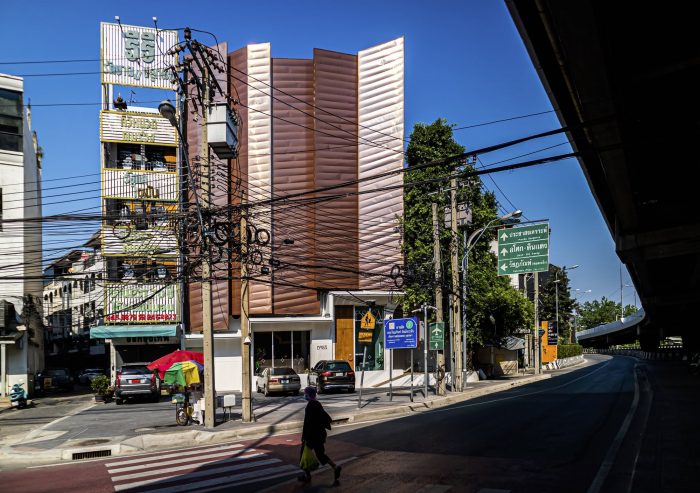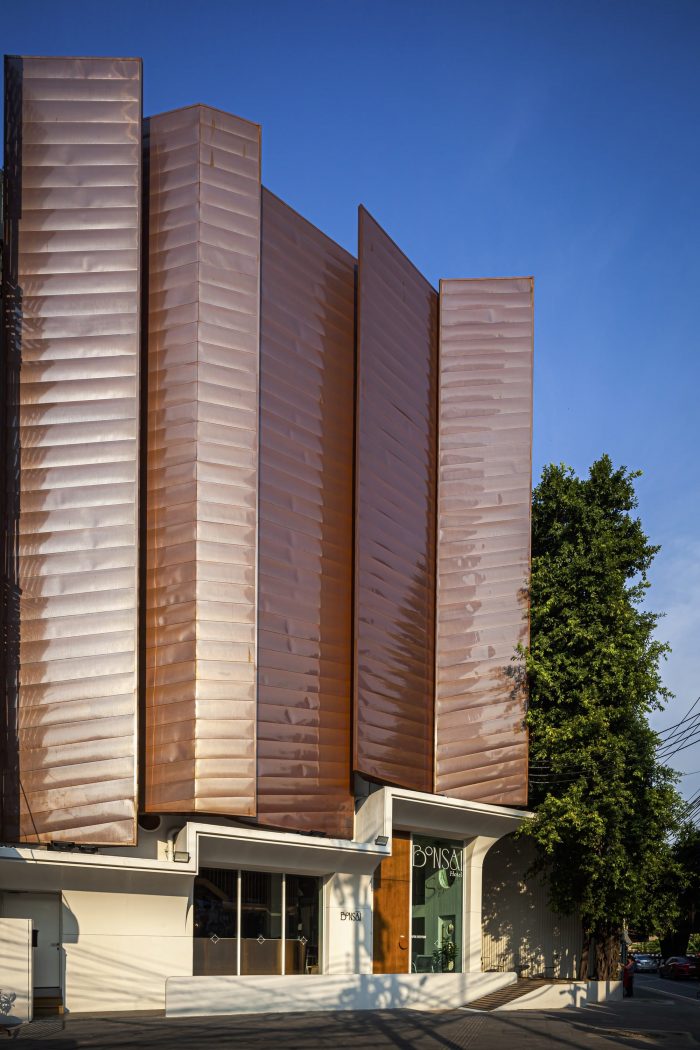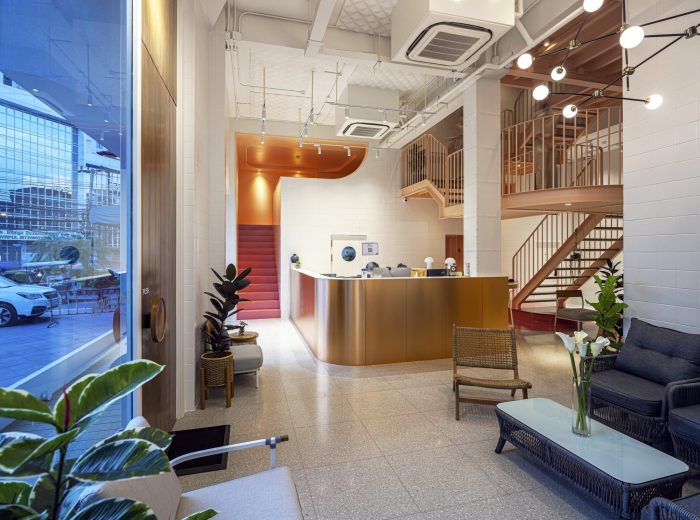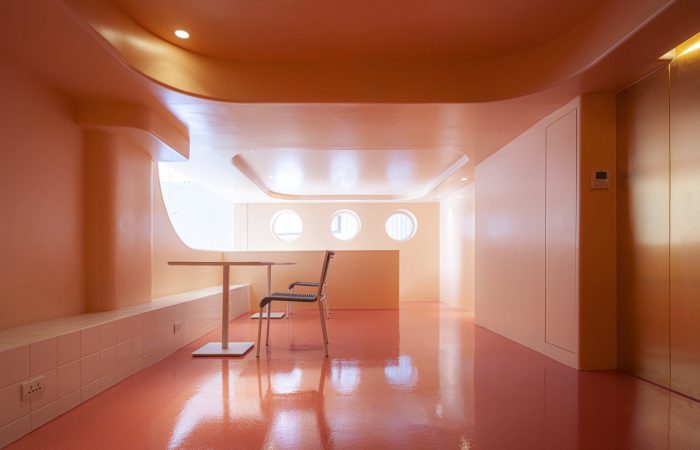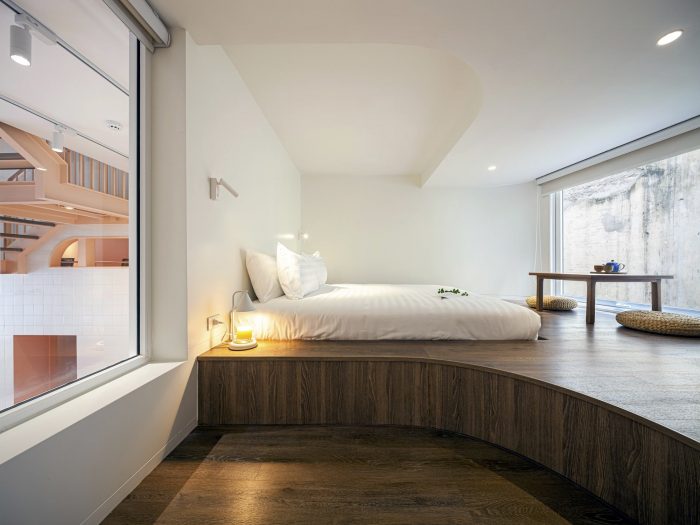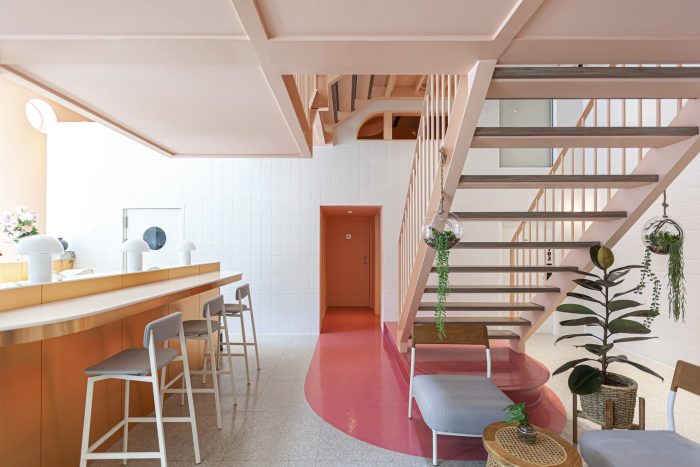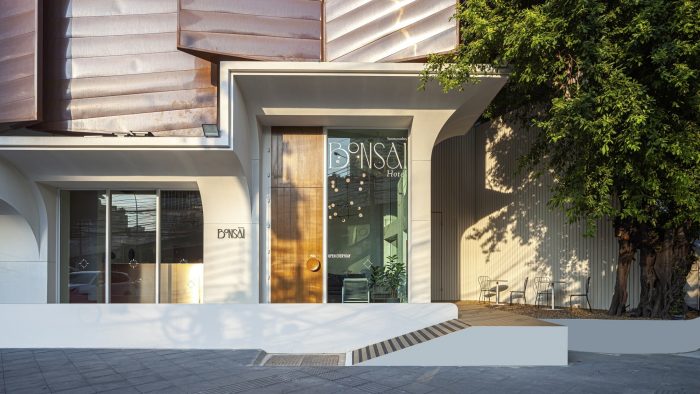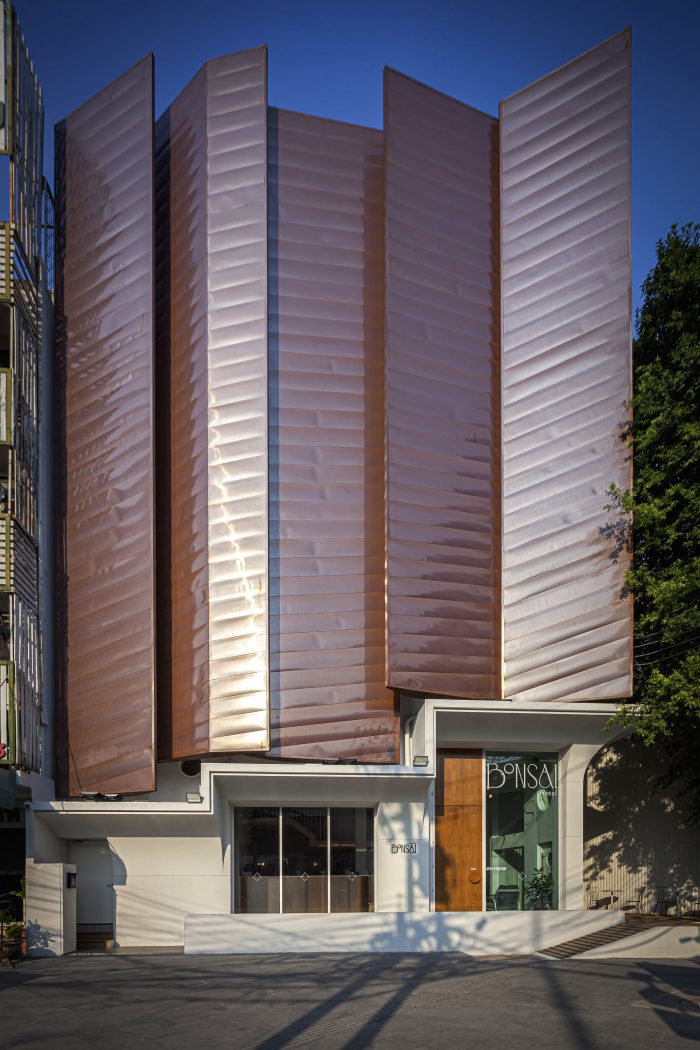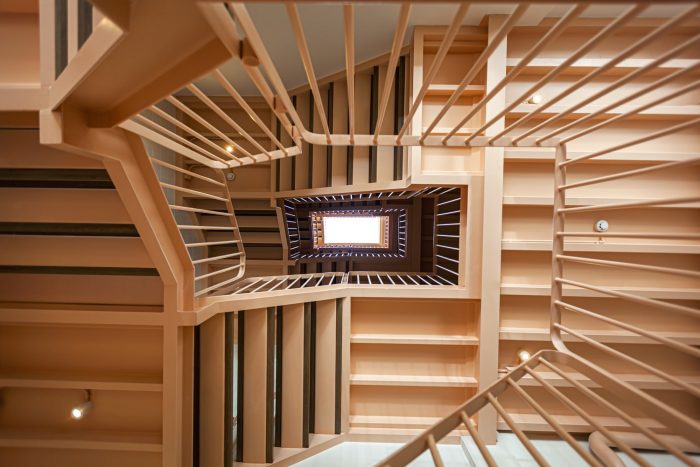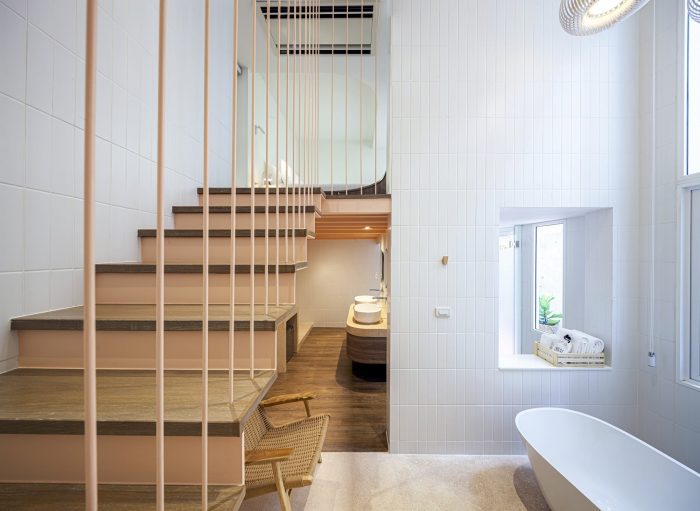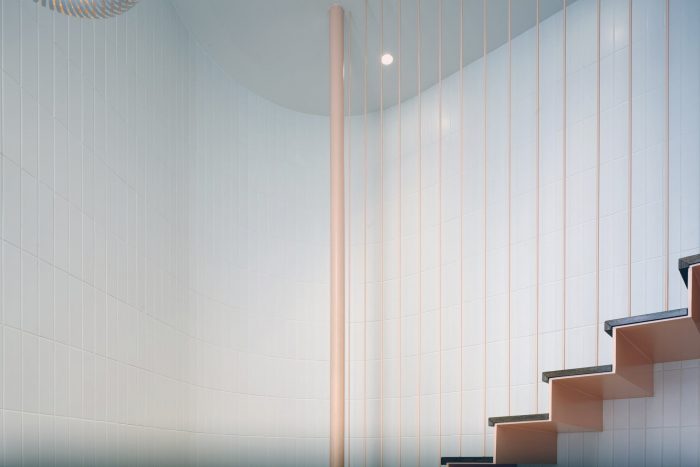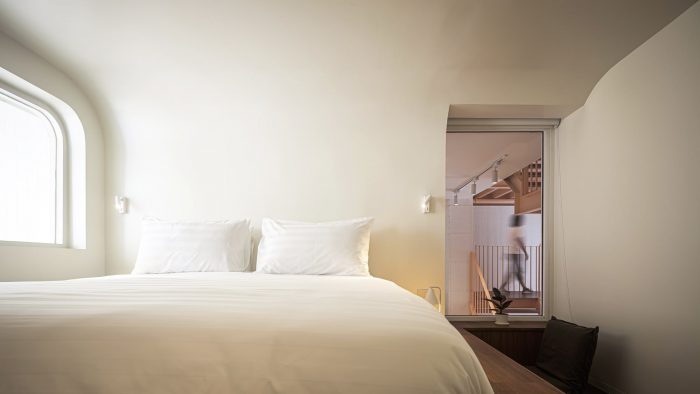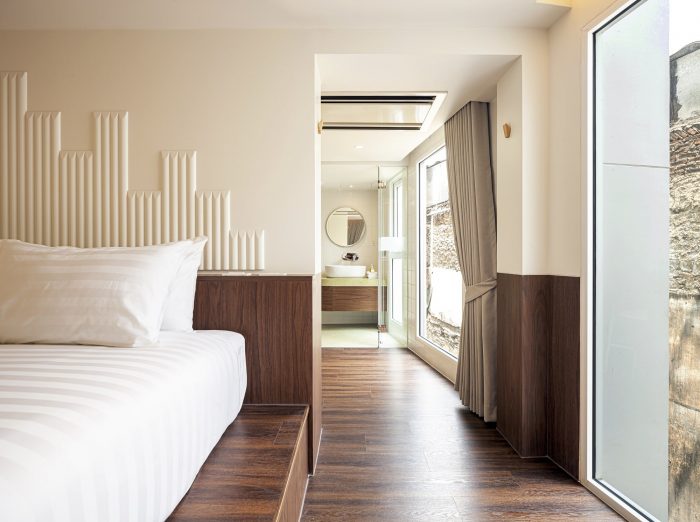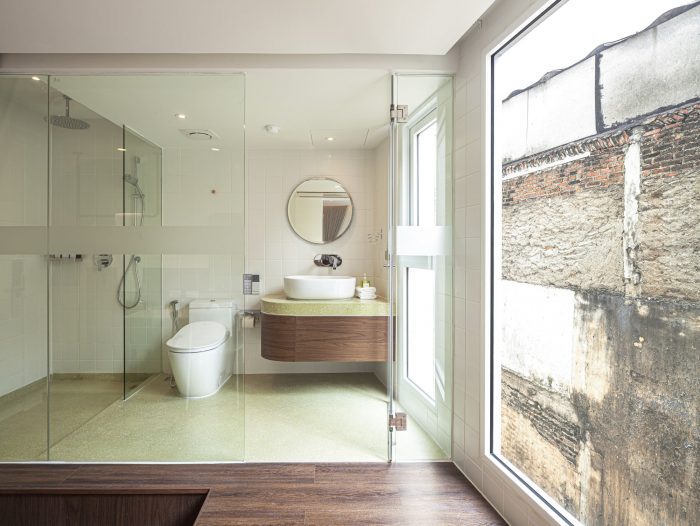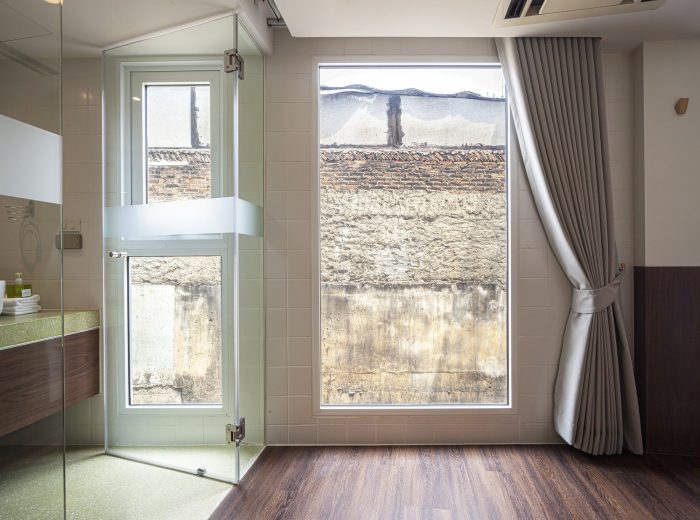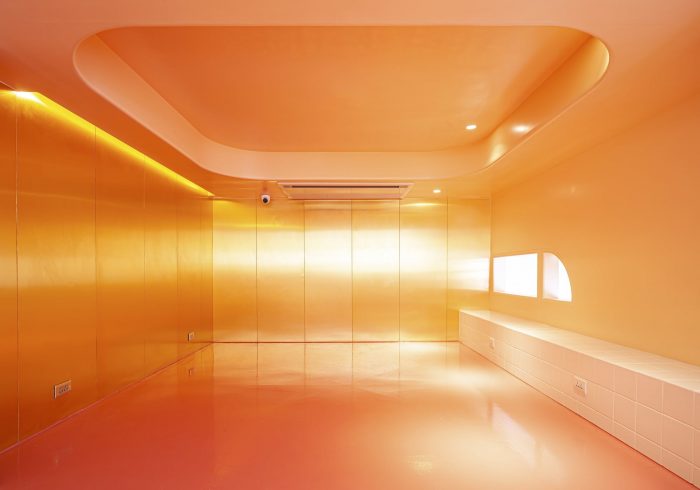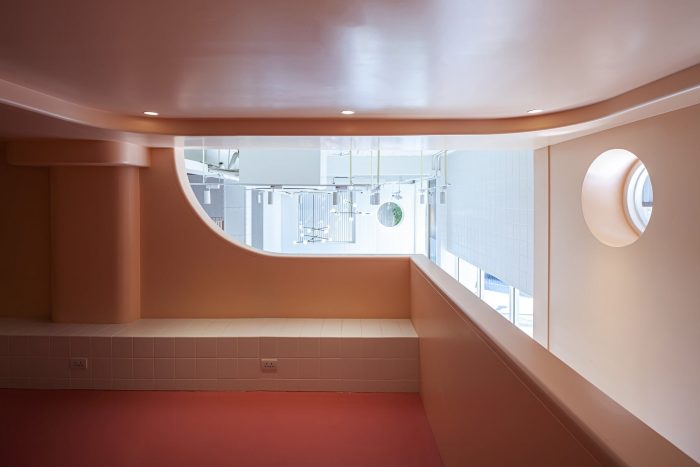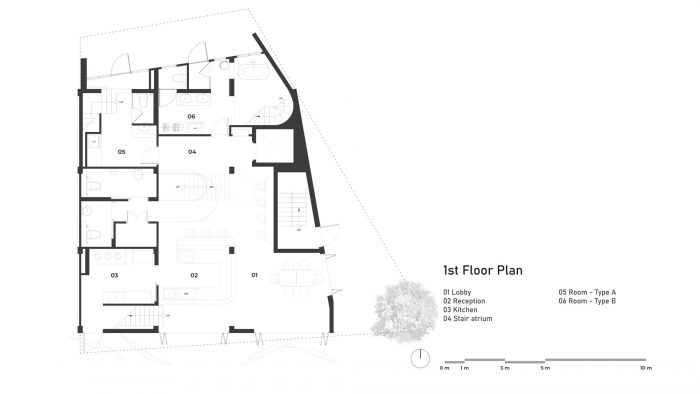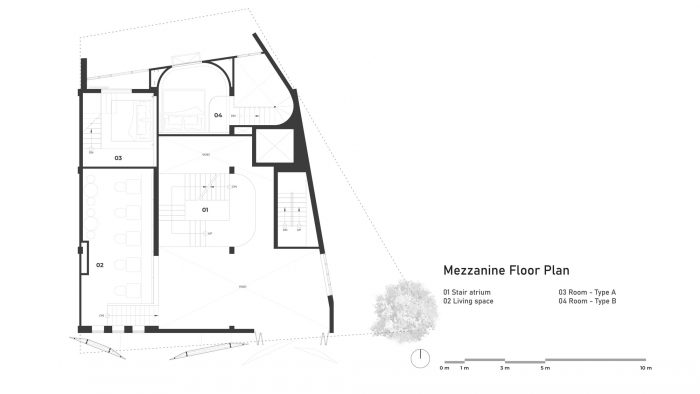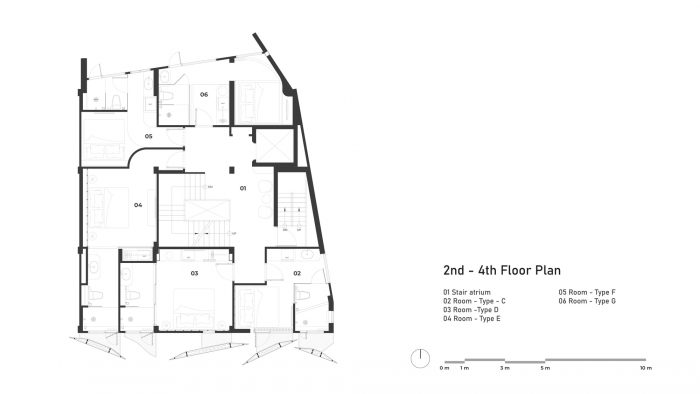业主拥有这栋废弃的商业建筑,二十年前是他祖父的诊所。该建筑位于泰国曼谷的Ratchathewi区。由于它靠近机场铁路,离曼谷中央商务区只有一公里,背景将充满许多购物区、街头食品小贩和游客。因此,根据现场情况和业主的酒店管理经验,他们决定将这栋建筑改造成酒店。
The owners have the abandoned commercial building that was his grandfather’s clinic twenty years ago. The building is in the Ratchathewi district, Bangkok, Thailand. As It’s close to the airport rail link and only a kilometer from Bangkok CBD, the context will be filled with many shopping areas, street food vendors, and tourists. Therefore, with site context and the owner’s experience in hotel management, they decided to renovate this building to be a hotel.
在80年代,这个区曾经是一个购物区,但由于城市交通的变化,道路变成了单行道系统,难以进入,所以留下了二十多年的废弃。出于这个原因,建筑师打算设计的酒店将成为它的过去和未来之间的连接点,保留它自己在80年代的故事,并使它恢复活力。
In the 80s, this district used to be a shopping district, but it left more than twenty years abandoned due to the change in city transportation, the road became a one-way system and difficult to access. For that reason, the architect intended to design the hotel that would become the connector between its past and its future, preserve its own story during the 80s and bring it back to life.
在这个想法下,建筑的结构和一些共用的墙体被保留下来,代表了它过去的时期,包括场地内超过60年的榕树,后来成为设计的灵感和酒店的名字。盆景这个名字并不意味着日本的种植方式,而是来自于 “Bon”,意思是上面,而 “Sai “的意思是榕树;因此,它是结合在榕树上的生活。
With this idea, the building has been renovated in the way that the structure and some of the shared wall has been kept representing its past period, including the more than 60 years old banyan tree in the site area which later became the inspiration for the design and the name of the hotel. The name Bonsai doesn’t mean the Japanese way of planting, but it comes from ‘Bon’ which means above, and “Sai” which means banyan tree; therefore, it’s combined to be living on the banyan tree.
从外观上看,倾斜的铜制外墙被用来给房间提供隐私,并阻挡来自主干道的灰尘和噪音,而直接的阳光将被外墙的背面阻挡并反射到酒店的单元。铜被用来表达时间和老化的概念。一旦时间流逝,建筑的铜元素就会被腐蚀,尤其是外墙,代表着建筑与成长中的榕树一起在变化。该酒店有4层。在一楼,有一个带夹层的大厅和复式单元;二楼及以上是酒店的单元。楼梯被重新设计,从典型的商业建筑的隐蔽楼梯变成了暴露的中庭楼梯,这就像树的主干,而酒店单元的多样性就像树的根和枝的不可预测性。
From the exterior, the tilted copper facade has been used to give privacy to the room and block the dust and noise from the main road while the direct sunlight will be blocked and reflected into the hotel’s unit by the back of the facade. Copper is used to express the idea of time and aging. Once time passes, the copper elements of the building will be corroded, especially the facade, to represent that the building is changing together with the growing banyan tree. The hotel has 4 stories. On the first floor, there is a lobby with a mezzanine area and duplex units; on the second floor and above are the hotel’s units. The stair has been redesigned from the typical commercial building hidden stair into the exposed atrium stair which is like the trunk of the tree while the variety of the hotel’s unit is like the unpredictable root and branch of the tree.
除了铜之外,80年代风格的材料,如水磨石砖,与现有建筑相同的小矩形砖,以及霓虹粉色的油漆都被用来代表这栋建筑在过去被遗弃之前的黄金时代。在酒店的单元内,剩余的共享墙面的景色就像一幅被白色窗框框住的艺术画,让用户看到建筑过去的痕迹。房间布局的变化是为了适应有限的现有结构条件,如一个单元有一个上升的地板,以便将卫生系统隐藏在下面,而台阶也可以作为座位,并定义卧室区域。
Apart from copper, the 80’s style materials such as terrazzo tiles, small rectangular tiles same as the existing building, and neon pink color paint have been used to represent the golden age of this building in the past before it was abandoned. Inside the hotel’s unit, the view of the remaining shared wall is like an artistic picture framed by a white window frame for the user to see the trail of the building’s past. The variation of room layout has been designed to fit in limited existing structure conditions such as a unit with a rising floor for the sanitary system to be hidden underneath while the step can also be used as the seat and define the bedroom area.
Architects: Volume Matrix Studio
Area : 750 m²
Year : 2022
Photographs :Spaceshift Studio
Construction : Signcon Bangkok
City : Khet Ratchathewi
Country : Thailand


